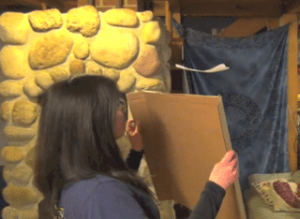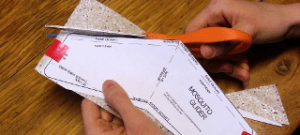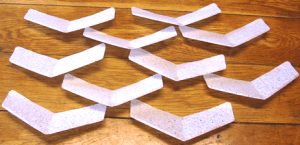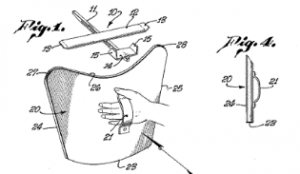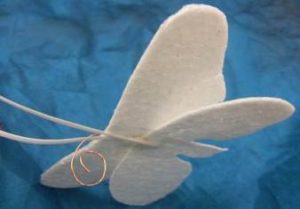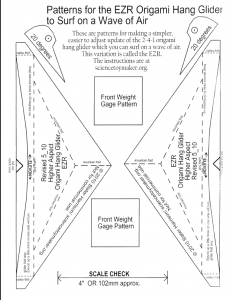(AKA Walkalong Gliding)
"Any sufficiently advanced technology is indistinguishable from magic." --Arthur C. Clarke
If YouTube is blocked at your school, try this 16MB MPEG file
How to Start Flying Any Design of Glider
Introduction to Walkalong Glider
The first time I encountered gliders levitated and controlled by an invisible wave of deflected air, it felt like magic! Surely this was going to take the world by storm, the way Mentos and Soda swept the world as a science activity a few years ago. But while researching the history of walkalong gliders, I was surprised to learn that the concept of surfing the gliders is decades old. Knowledge about them was cloistered within a few aerospace engineering and hang glider communities—definitely not in schools.
As an educator, I set about to make walkalong gliders accessible to regular people as a fun science activity by developing thin (1/2 mm) foam gliders that are an order of magnitude lighter than paper. Only a few times denser than air itself, they fly so slowly that beginners have time to think and react. If I walked beside you and we both held onto the board, then you could learn to fly in minutes because that way you gain a feel for flying. Soon you would be swooping around your house flying as easily as you ride a bicycle.
And the thin foam gliders are so efficient that advanced pilots (with practice) can levitate them with only their hands deflecting the air! The foam sheets are inexpensive to buy or slice your own--no one is excluded for lack of money. I find that kids around the age of 10 start having enough coordination to fly them.
So NOW the activity is going to catch fire, right? No. Any knucklehead can drop Mentos in soda, but walkalong gliders demand more. You don’t need to be flight savvy to start, but you have to pay attention to details. For one thing, the thin, light foam is also very delicate. The gliders won’t break from crashing into walls, but careless/nervous hands will wreck them in seconds. Even adults lack an analog for handling something that carefully--unless they’ve cuddled with a pet butterfly. Furthermore, the gliders need dead-still air, which usually means not outside except at dawn and dusk. Even aggressive HVAC systems and cause too much air turbulence inside. And although I can easily show people how to fly, being the first in your region with nobody to show you is more difficult.
Some people will be daunted by these eccentricities of walkalong gliders. But inspired pioneers--who care a little more about details and work a little harder to learn new things--are spreading walkalong flight in the world! Here are some tips for teaching groups to fly.
Foam Walkalong Glider Gallery
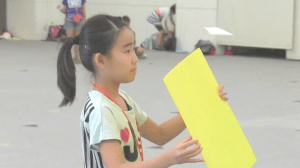 Check out the flight gallery of people who have sent pictures or posted videos.
Check out the flight gallery of people who have sent pictures or posted videos.
Learn to Fly Walkalong Gliders
Flying an already-made glider is the best way to begin and all packages come with a couple of RTF (ready to fly) gliders. This video shows the best way I know of how to learn.
Teaching a group to fly? Here are some tips.
Get Gliders and Foam Sheets
Using gliders made from thin, low-density EPS (expanded polystyrene) is the best way to get started. Foam is extremely lightweight and slow-flying, so you have time to think and react. Thin sheets of EPS foam are much lighter and more rigid than paper, and inexpensive, too. Get gliders and foam here.
Stop Glider Static Cling
 If the glider is attracted to the board, you just need a damp wipe.
If the glider is attracted to the board, you just need a damp wipe.
Archived Pages and Cool Stuff Related to Air-Surfing
Sort of interesting to see how I got into walkalong gliders and how it developed. (via Wayback Machine)

